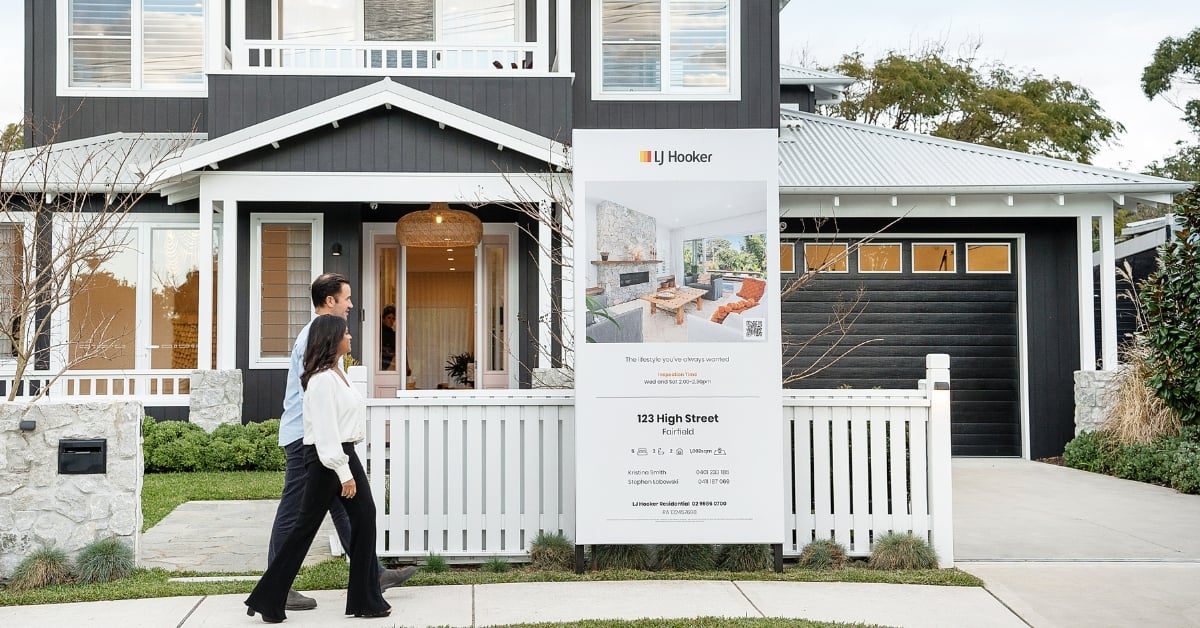How to Get a Home Loan

Are you planning to buy and wonder how to get a home loan? When it comes to getting a home loan, the process can seem daunting, especially if this is your first application.
However, by being aware of the home loan application steps, as long as the documents and information you may be asked to provide along the way, you can ensure everything goes as smoothly as possible.
Research Home Loans
The first thing you'll want to do is research the different types of home loans available as understanding the different options will help ensure you are making an informed decision.
When talking to your LJ Hooker Home Loans Specialist make sure you ask:
- What loan options are available?
- What will my repayments be?
- How long do I have to repay the loan (usually 25 to 30 years)?
- How much deposit is required?
- What are the fees and charges?
What are the loan conditions and any penalties or exit fees?
You'll also want to set yourself a budget, or perhaps talk to your home loans specialist about this, so you can determine the amount of money you need to borrow. Getting pre-approved for this amount could be a wise idea if you are still shopping around for the perfect property. Pre-approvals tend to last for up to three months and can help you move more quickly once you have found the perfect property.
Documentation you may need
During this application process, you'll be asked for several pieces of documentation. This includes showing that you have enough savings to cover the deposit on your property and other fees that may be applicable.
If you are self-employed, you may be asked to show tax returns and other financial information from the past two years, while anyone who is employed will need to show evidence of their payslips.
Group certificates and 100 points of ID may also be requested.
Getting Approval
Lenders take into account four main considerations or criteria when assessing your home loan application. Firstly your capacity to repay the loan based on your income and expenses. Secondly, if you are considered a good financial risk, they will check your credit rating to see that you have a history of repaying your debts. The third consideration is collateral, which ensures the property you are buying is adequate security for the money you wish to borrow to pay for it. Finally, they look at your capital, which are any assets you currently own.
Getting your application approved is the next step to owning your own home. Common practice is to obtain a ‘pre-approval certificate’ prior to buying a property. This will help your property search and keep your budget in check. This certificate confirms that a financial institution will lend you ‘x’ amount of money when you find a property to buy. Be careful though, one of the standard conditions is ‘subject to valuation’. If you pay too much for a property, your lender will see this as a risk and may not provide the cash. Not a good position to be in when you’ve already exchanged contracts!
With stricter lending criteria in the wake of the Global Financial Crisis, it may also be necessary to show a genuine history of your ability to save money. In some instances, particularly for first home buyers, a guarantor may also be required or a larger deposit (at least 20 percent of the purchase price).
Making your purchase
Depending on whether you are planning to buy at auction or make an offer on a property, you'll find there are some slight differences in the transaction process.
If you are buying at auction, you will usually be required to pay a ten per cent deposit at the moment the hammer falls - and there is no cooling off period. Your deposit is then held in trust by the agent or your solicitor and any interest earned is split between you and the vendor during the settlement process.
Buying from an offer usually involves a non-refundable payment of 0.25 per cent as a holding deposit if it is accepted.
From this point, you will usually be entitled to a five-day cooling off period, at which time you should organise your inspections and valuations, as well as discuss your finances with your lender.
During this period, it is essential to be aware that the property will not be held exclusively for you until a deposit of between five and ten per cent has been paid and contracts are signed.
Processing your home loan
After you have found the home you love and bought it you are up to the final state in the home loan journey, the processing of the home loan. To help ensure this runs as smoothly as possible it is important that your lender remains informed throughout the buying process as they will be able to process your home loan more quickly if they are aware of all the details.
This information includes the contact details of your solicitor or conveyancer, real estate agent and vendor, as well as a copy of the contract of sale. At this point, first-time buyers should complete their forms for the First Home Owners Grant - these can be supplied by LJ Hooker Home Loans or through your solicitor or conveyancer.
Once a valuation has been carried out and all the other documents have been received and processed, LJ Hooker Home Loans will grant formal approval on your home loan and the documents will be sent to you.
At this time, you will need to sign these documents and return them. Your solicitor or conveyancer will then liaise with LJ Hooker Home Loans until the loan settles - this usually occurs between 30 and 42 days after the contract has been signed, depending on its terms.
Different types of home loans
As a first home buyer you may be asking yourself, “Which home loan is best for me?” It is important to talk to us so you understand the different home loan options you have and the advantages and disadvantages of each is very important.
The right home loan option for you will depend largely on your current financial situation and what offers are available at the time - you'll want to ensure you carry out careful research before you make your decision.
Here are the main types of loans on the market:
Fixed
Fixed rate mortgages & home loans set the interest rate at one level for a nominated term - usually one to five years. You have the benefit of knowing exactly what payments are required from you during that period.
You may end up paying either less or more than the standard variable rate, but the advantage is that you have locked in a rate that you're comfortable with and the uncertainty of the situation is removed.
Pros |
Cons |
|
|
Variable
Standard variable home loans are tied to a floating interest rate, which means the amount you pay each month can change. It does give you the opportunity to make changes throughout the life of the home loan as either your personal finances or economic conditions vary which is popular with many borrowers.
If you are an owner-occupier borrower, principal and interest repayments could suit you, as the balance is reduced from the very beginning.
For investors, interest-only repayments might be ideal because they allow you to claim the maximum tax deductions on your property purchase.
Pros |
Cons |
|
|
Split
This loan offers you the best of both worlds, with a mixture of features from both a fixed and variable rate loan.
Pros |
Cons |
|
|
Construction home loan
A construction home loan is specifically for borrowers who are building a new home and can be paid in stages to the builder.
As you make these progress payments, some lenders also require valuations along the way.
Once construction is complete, the loan reverts to the standard variable for the type of loan you have chosen.
Line of credit home loan
With this type of home loan, you don't have to make repayments until the line of credit is full drawn.
Interest is calculated on the daily loan balance and provided this and the monthly fees accrued do not exceed the line of credit, the interest can be added to the loan.
Most accounts of this kind also come with the added convenience of credit access via debit card or cheque book.
Offset account
An offset account is a savings account attached to the mortgage, with the balance used to offset the interest charged on your loan.
Some lenders also provide a free redraw and additional repayment facility on their variable rate loans, which have the same benefits as an offset account.
Low-doc home loan
A low-doc home loan is for self-employed people only and applicants must sign a declaration. In most cases financials are also required.
Low-doc home loans generally have a higher interest rate, but you may be able to switch to a full-doc home loan at a later date.
DISCLAIMER - The information provided is for guidance and informational purposes only and does not replace independent business, legal and financial advice which we strongly recommend. Whilst the information is considered true and correct at the date of publication, changes in circumstances after the time of publication may impact the accuracy of the information provided. LJ Hooker will not accept responsibility or liability for any reliance on the blog information, including but not limited to, the accuracy, currency or completeness of any information or links.



